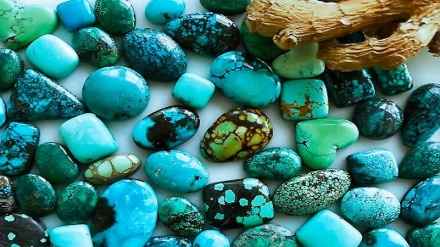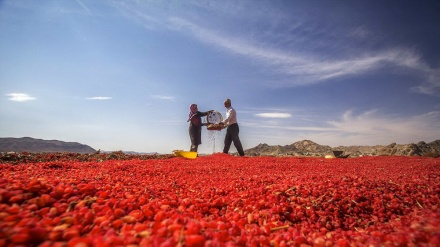Iranian Market (48)
Hello dear listeners and welcome to this episode of our weekly program, the Iranian Market in which we’re going to discuss the Islamic Republic of Iran’s mines and minerals.
Keep us company until the end of the program.
The Islamic Republic of Iran is one of the top ten countries in terms of mineral reserves. The Islamic Republic also ranks first in West Asia- North Africa region in this regard.
According to statistics, over 7% of the world mineral reserves are located in Iran. The rich mineral reserves and resources has made Iran one of the most powerful countries to supply the basic materials needed for industrial projects.
So far about six thousand mines consisting of seventy types of minerals have been recognized in Iran.
Recently, Iran has also recognized fifteen thousand districts with forty billion tons of mineral reserves worth more than 770 billion dollars.
Some of the world’s major mines include Sarcheshmeh copper mine in Kerman province, Chadormalu iron mine in Yazd province, Sungun copper mine in East Azarbaijan province, Pabdana coal mine in Kerman province, Zarshouran gold mine in West Azarbaijan province, and Neishabur turquoise mine in Khorasan Razavi province.
Iran’s recognized copper reserves exceed more than thirty million tons.
According to global figures, 8% of the world’s zinc and 3% of the world’s lead are located in Iran. The Islamic Republic is also the fourth producer of gemstones in the world.
Having abundant resources of uranium, coal stone and iron ore, has put Iran's name among the top countries in the world list.
According to the assessments, Iran is located on the belt of iron, lead, zinc, copper, gold and marble.
Iran will have the capability to produce and exploit mineral reserves at least till the next century.
According to official statistics, major Iranian copper complexes produced about 228 million tons of copper during the three quarters of the last Iranian year (March 21, 2018-December 22, 2018).
Data released by Iranian Mines and Mining Industries Development and Renovation Organization shows that copper ore extraction during the same period amounted to over 143 million tons.
Copper sulfide extraction topped 40 million tons, which was 4% more than the prediction.
Copper concentrate output during the period under review stood at 897,258 tons. Sarcheshmeh Copper Complex, Iranian Babak Copper Co., and Sungun Complex accounted for over 80% of the output.
Copper anode production in Khatoon-abad Copper Refinery during the nine-month period reached 82,063 tons.
Nationally, copper cathode output during the period was over 179,000 tons.
According to the reports, Sarcheshmeh Copper Complex, the leading copper producer in Iran, is planning to boost its copper concentrate output capacity from the current 600,000 to over one million tons by 2022.
This complex operates the open cast copper mine in Kerman Province, which is considered the second largest copper deposit in the world.
National Iranian Copper Industry Company is now the leading copper producer in the West Asia- North Africa region holding close to 14% of Asia’s copper reserves and about 3% of global deposits. The company operates several other copper mines in the country.
According to Iran's Geological Survey, the copper reserves of the country hold an estimated of four billion tons of copper ore.
The Islamic Republic of Iran currently exports more than 70% of its copper production.
The value of the country’s export can reach five billion dollars if small mines across Iran are activated and the country increases its concentrate production.
Iran’s traditional copper customers are European countries, Japan, and South Korea. However, China is currently Iran’s main copper customer.
AE/SS


